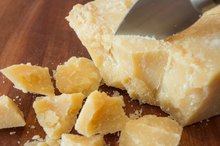Signs of High Uric Acid
When uric acid levels rise above normal in the bloodstream, they travel through the tissues and form crystal deposits in the joint spaces. The crystal deposits cause joint inflammation, swelling, limited range of motion and redness. The inflammation often occurs in the joint spaces of the large toe. Other areas of inflammation include the ankles, wrists, fingers and knees. Inflammation progresses quickly over a period of eight to 12 hours. A high uric acid buildup in the body is called gout, and when inflammation and pain develop, it is called a gouty arthritis attack.
If you are experiencing serious medical symptoms, seek emergency treatment immediately.
Discomfort
Protein-rich foods such as:
- red meat
- fish
- chicken
- organ meat
- beans
- some vegetables
- alcoholic beverages contain purines
According to MedlinePlus, the body breaks down purines into a chemical substance called uric acid 4. Uric acid travels through the bloodstream to the kidneys, where it is excreted through urination. Hyperuricemia occurs when body cannot eliminate uric acid, causing a high level of uric acid to build up in the bloodstream 3. According to the American Academy of Family Physicians, patients can have hyperuricemia for years without symptoms 13. When hyperuricemia symptoms begin, they progress quickly and cause much discomfort 3.
Joint Pain
Gout and Shrimp
Learn More
As joint inflammation continues, the affected area becomes very painful. According to the eOrthopod website, patients often find the pain unbearable during a gouty arthritis attack. If the lower extremities are affected, patients cannot stand or walk. A light touch to the affected joint, or even the weight of a light sheet, can cause excruciating pain. The pain may resolve within a few hours or a few weeks. Often symptoms begin at night or during early morning hours. The attack usually peaks within 24 to 48 hours, and then symptoms begin to subside.
- As joint inflammation continues, the affected area becomes very painful.
- If the lower extremities are affected, patients cannot stand or walk.
Flu-like Symptoms
In addition to joint pain and inflammation, flu-like symptoms occur during a gouty arthritis attack. According to the American Academy of Family Physicians, this includes low-grade fever, chills and generalized body aches 1. Sometimes a spike in the white blood cell count, called leukocytosis, also occurs. This may make diagnosis more difficult because doctors may suspect an infection.
- In addition to joint pain and inflammation, flu-like symptoms occur during a gouty arthritis attack.
Diagnosis and Treatment
What Are the Causes of Migratory Arthritis?
Learn More
Physicians check uric acid levels via blood tests 4. Normal uric acid levels range from 2.4 to 7.0 milligrams per deciliter. Doctors treat hyperuricemia with medications and diet modification 3. The body produces some uric acid naturally, but the majority of uric acid is obtained from food. It is important for patients with hyperuricemia to avoid purine-rich foods 3. While hyperuricemia may still be present, diet modification may eliminate painful gouty arthritis attacks 3.
Related Articles
References
- American Academy of Family Physicians: Gout and Hyperuricemia
- eOrthopod.com: A Patient's Guide to Gout
- Chemocare: Hyperuricemia
- MedlinePlus: Uric Acid-blood
- George C, Minter DA. Hyperuricemia. [Updated 2019 Jun 4]. In: StatPearls [Internet]. Treasure Island (FL): StatPearls Publishing; 2019 Jan-.
- American Association for Clinical Chemistry. Uric acid. Reviewed May 17, 2017.
- Benn CL, Dua P, Gurrell R, et al. Physiology of hyperuricemia and urate-lowering treatments. Front Med (Lausanne). 2018;5:160. doi:10.3389/fmed.2018.00160
- George C, Minter DA. Hyperuricemia. [Updated 2019 Jun 4]. In: StatPearls [Internet]. Treasure Island (FL): StatPearls Publishing; 2019 Jan-.
- Ramirez-Sandoval JC, Madero M. Treatment of hyperuricemia in chronic kidney disease. Contrib Nephrol. 2018;192:135-146. doi: 10.1159/000484288
- Wilson FP, Berns JS. Tumor lysis syndrome: new challenges and recent advances. Adv Chronic Kidney Dis. 2014;21(1):18–26. doi:10.1053/j.ackd.2013.07.001
- American Association for Clinical Chemistry. Uric acid. Reviewed May 17, 2017.
- Khanna D, Fitzgerald JD, Khanna PP, et al. 2012 American College of Rheumatology guidelines for management of gout. Part 1: systematic nonpharmacologic and pharmacologic therapeutic approaches to hyperuricemia. Arthritis Care Res (Hoboken). 2012;64:1431–46. doi: 10.1002/acr.21772
- Coburn BW, Bendlin KA, Sayles H, et al. Target serum urate: Do gout patients know their goal? Arthritis Care Res (Hoboken). 2016;68(7):1028-35. doi:10.1002/acr.22785
- Wiederkehr MR, Moe OW. Uric acid nephrolithiasis: a systemic metabolic disorder. Clin Rev Bone Miner Metab. 2011;9(3-4):207–217. doi:10.1007/s12018-011-9106-6
Writer Bio
Katherine Bendickson began writing professionally in 2010 for LIVESTRONG.COM. She is a registered nurse specializing in oncology, and she has had an oncology nurse certification since 2005. Bendickson holds a Bachelor of Science in nursing from the University of South Carolina-Aiken.









